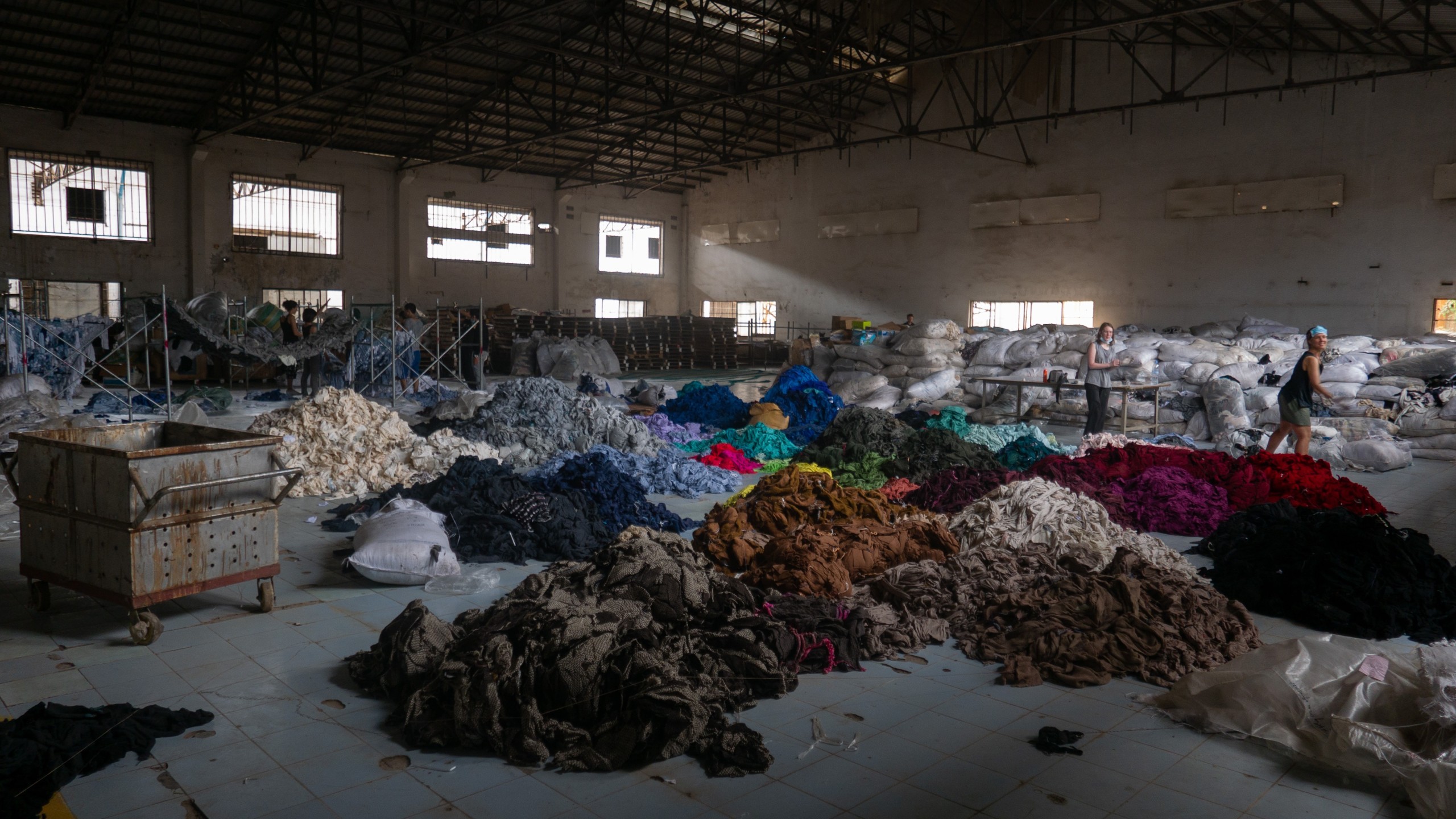Fast fashion is the rapid production of inexpensive clothing, churned out to keep pace with the ever-evolving style preferences of consumers. It’s a system built on speed, low costs and complicated, sprawling global supply chains; and from the glossy magazines and tempting websites, it can be hard for consumers to resist. However, fast fashion production often results in garments of questionable quality; and these often end up in landfill.
In addition, beneath the surface of fast fashion lies a complex, intricate web of power dynamics within the fashion industry. Brands and retailers wield immense control, while suppliers and manufacturers bear the burdens of production, often in conditions that are considered exploitative. This blog will take a further look at these dynamics, and how they contribute to the challenges of creating a sustainable fashion industry.
Setting the Scene in Garment Production: Risks to Suppliers and Manufacturers
There are a number of risks due to fast fashion; including the risks to workers in supply chains and damage to the environment. However, there are also a number of risks to suppliers and manufacturers; and it’s important to address these as part of the wider picture in understanding the intricacies involved in creating a more sustainable approach.
- Financial Risks: One of the biggest challenges is the financial risk associated with supplying to fast fashion brands. Brands often demand lower prices and larger quantities, leaving suppliers with slim profit margins. In addition, delayed payments, bulk discounts, and sudden order cancellations can severely suppliers’ cash flow and overall profitability.
- Environmental Risks: Frequent production cycles and the pressure to produce more lead to overproduction, resulting in excessive waste and pollution. Suppliers and manufacturers, particularly in regions where environmental regulations are lax, often bear the brunt of these consequences, with their local environments suffering with the negative ecological impact.
- Relationship Imbalance: The power dynamics between suppliers/manufacturers and fast fashion brands are imbalanced. Brands, with their global reach and market dominance, often dictate terms, leaving suppliers with limited bargaining power. This imbalance can result in suppliers accepting unfavourable conditions, further impacting their financial stability and operational autonomy.
- Dependency on Brands: Suppliers and manufacturers often find themselves heavily reliant on fast fashion brands for their orders and viability as a business. Focusing on single brands can make them vulnerable to any changes brands make. When a brand shifts its production or sourcing elsewhere or reduces orders, suppliers and manufacturers are left with limited options for diversification. This narrow focus on a single client base can lead to instability and economic insecurity.
The Power and Dominance of Fast Fashion Brands
It’s no secret that brands wield immense influence within the fast fashion industry. Fashion brands dominate marketing platforms, curating images and messages that captivate consumers and make them want to buy more. While this is good news for the bottom line of the fashion brand, this also has consequences across the supply chain when it comes to driving a sustainable future.
Understanding these dynamics is crucial as the industry grapples with its social, economic, and environmental implications.
- Pressure on Prices: Brand dominance exerts significant pressure on suppliers and manufacturers to produce garments at incredibly low costs. In the quest to meet the brand’s demand for competitive pricing, suppliers often resort to cost-cutting measures, compromising various aspects of the supply chain. This relentless drive for affordability can lead to exploitative labour practice and underinvestment in sustainability. These consequences are significant and ripple down the supply chain, impacting workers, local communities, and the environment.
- Quality Compromise: The focus on low prices by brands often results in a compromise in garment quality. As a result, suppliers may choose cheaper materials and cut corners in manufacturing to meet tight budgets. This compromise in quality not only affects the durability and longevity of clothing but also perpetuates the throwaway culture of fast fashion. As consumers encounter garments that quickly deteriorate, the life cycle of a garment is reduced; and consumers are encouraged to discard and replace items frequently.
The impact of unfair purchasing practices
What are unfair purchasing practices?
Due to the power imbalance between brands and suppliers, as well as the pressure for manufacturers to produce fashion so cheaply and so quickly, unfair purchasing practices can arise. Unfair purchasing practices refer to a range of exploitative actions and tactics employed by brands and retailers in their dealings with suppliers and manufacturers within the fast fashion supply chain.
These practices can take various forms, impacting different stages of the supply chain. Examples include late payments, where suppliers are often left waiting for extended periods before receiving compensation for their goods and services. Last-minute order changes disrupt production plans, leading to inefficiencies and increased costs. Unrealistic production timelines demand an unattainable pace, straining the capacity and resources of suppliers and manufacturers.
What are the consequences of unfair purchasing practices on fast fashion sustainability?
Unrealistic production timelines create intense pressure on manufacturers, leading to compromises in quality and worker conditions. These practices not only make smooth functioning of the supply chain more difficult, but can also perpetuate a cycle of exploitation, as well as making investing in more sustainable practices more difficult and unrealistic.
Consequences include:
- Financial Strain
Unfair purchasing practices place significant financial strain on suppliers and manufacturers. Delayed payments disrupt cash flow, making it challenging to meet operational expenses and invest in sustainable practices. Frequent changes in orders and production schedules lead to increased costs and reduced profitability. This financial instability can threaten the viability of businesses within the supply chain.
- Ethical Concerns
Beyond the financial repercussions, unfair purchasing practices give rise to ethical dilemmas. When suppliers and manufacturers are pressured to meet the demands of brands, they may cut corners, compromise on labour conditions, or overlook environmental standards. This risks the well-being of workers and the environment, perpetuating a cycle of exploitation.
If fashion is ever to be made truly sustainable; these unfair purchasing practices, and their impacts, must also be challenged and changed across supply chains.
What are the role of brands in unfair purchasing practices?
Brands, in their pursuit of low costs and quick turnaround times, play a key role in continuing unfair purchasing practices. The power dynamics within the industry often allow brands to impose these practices on their suppliers. Brands leverage their market dominance to negotiate terms that favour their bottom line, leaving suppliers with limited room for negotiation. This imbalance of power enables brands to prioritise cost-cutting measures at the expense of fair and ethical supply chain practices.
Supply chain disruptions and their impact: COVID 19 Wake Up
The COVID-19 pandemic exposed the fashion industry’s vulnerability due to its fast-paced production and global supply chains. Demand plummeted, stores closed, and consumer behaviour shifted drastically. Supply chain disruptions, including lockdowns, factory closures, and transportation delays, further negatively impacted the industry. Unfair purchasing practices, such as cancelled orders and delayed payments, exacerbated the crisis by leaving suppliers and manufacturers in often difficult positions.
This highlighted the need for brands and manufacturers to build resilient and ethical supply chains together.
What are the solutions in this complex fashion web?
It’s clear that the issue of creating a more sustainable fashion industry is a complex web; comprising of manufacturers, the environment, brands, workers and consumers. The drivers of each one must be realistically considered when creating more sustainable policies to increase fashion sustainability. But what could some of these solutions involve?
Advocating for Ethical Fashion:
Ethical fashion is the cornerstone of a more sustainable and equitable industry. It prioritises fair wages, safe working conditions, and environmentally responsible production. Consumers, activists, and organisations can champion ethical fashion by supporting brands that adhere to these principles, increasing awareness of ethical practices, and advocating for industry-wide change.
The Importance of Consumer Awareness:
Consumer awareness is a driving force for change. Informed consumers can make ethical choices by researching brands, understanding supply chains, and demanding more ethical transparent approaches. They have the power to support responsible brands and influence industry practices through their purchasing decisions.
Brand and Industry Reforms:
Brands must take responsibility for their actions and drive industry reforms. Some forward-thinking brands have already initiated positive changes by adopting sustainable materials, fair labour practices, and transparent supply chains. These initiatives should be applauded, encouraging more brands to make these changes.
Collaboration:
Creating a more equitable fashion industry requires collective action. Brands should focus on prioritising ethical and sustainable practices, suppliers should ensure fair wages and safe working conditions, consumers should demand transparency, and policymakers can enact regulations that hold the industry accountable. Collaboration and systemic changes are vital to building a fashion industry that values both people and the planet.
Conclusion
Solving the complex problem of fast fashion requires a comprehensive approach—one that takes into account the multifaceted challenges and perspectives across the industry. And it’s clear that this is not straightforward. From unfair purchasing practices through to the power imbalance between brands and manufacturers; making fashion more sustainable demands a collective effort across the intricate web of issues. The fashion industry is a complex ecosystem, and the pursuit of sustainability requires finding common ground among these diverse perspectives.
The first crucial step towards a more sustainable fashion industry is acknowledging the influence and responsibility that brands, suppliers, consumers, and policymakers hold. Brands must re-evaluate their practices and prioritise ethical and sustainable production, and fair wages and responsible production must be the norm for suppliers and manufacturers.
As always, consumer behaviour change is key to this transformation.
Textile Consult operates worldwide and in the UK, consulting on a variety of management, training and sustainability issues within the textile industry. Contact us today to find out how we’ll work with you to find effective, sustainable solutions for your company.


